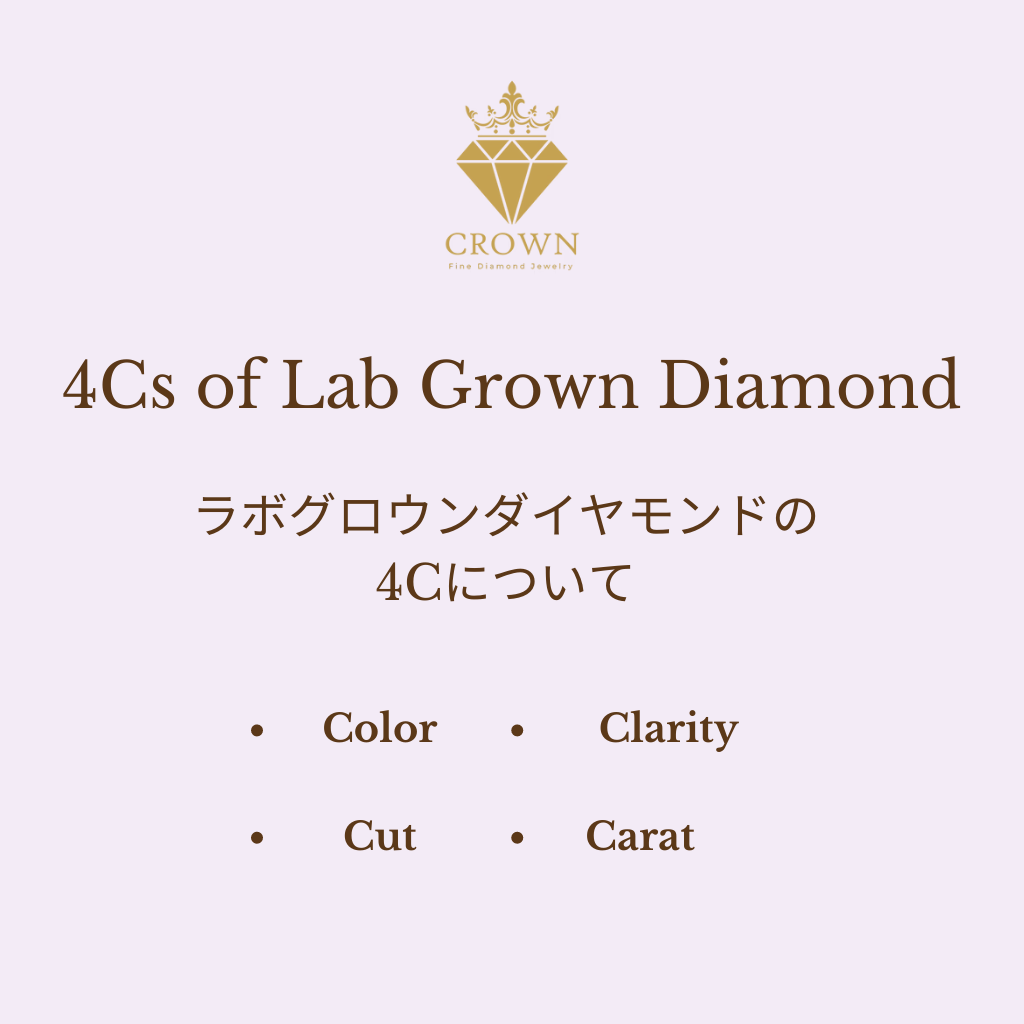4cs of lab-grown diamonds are known as the cut, clarity, color, and carat. Today 4C's of diamonds is an important factor in checking the quality of lab-grown diamonds. The 4cs of lab-grown diamonds decided the price and appearance of brilliance, scintillation, and fire. 4cs of a lab-grown diamond depends on the making and crafting process called as symmetry and polishing.
Lab-grown diamonds are another type of Natural Diamond. Thus, lab-grown diamond has an abbreviation of the Diamond.
Let’s have a look at the lab-grown diamond 4cs to understand what are they and why they’re important?
1. What is diamond color?
Diamond color is the sign of the making process and crystal usage, which can be essential in deciding the grade. Diamond color scales in D to Z grades start from colorless to fancy color diamonds. Diamond Color Grade means the reflecting sparkle light from the anatomies.
When a diamond can deliver pure white and rainbow-colored lights in reflections known as scintillations, it is the “D color grade diamond.” However, while a diamond doesn’t have white and rainbow-colored lights but carries fancy color light reflections, it is called “Z color diamond grade.” Thus, the diamond color grade decided the scintillation return from the anatomy.
As a result, the first c of the diamond is known as color, which grades evaluated from the whole anatomy appearance as a table, crown, girdle, pavilion, and culet inspections. Diamond color is easily noticeable in the loupe analysis.
2. What is diamond clarity?
Diamond clarity is determined from the inclusions generated on the table, crown, girdle, and pavilion anatomy. When a diamond has more inclusions in the anatomy, then it scales at the lowest grade of clarity(I1 to I3). While diamond anatomy features a clear and transparent appearance, like clear water, it gains higher clarity grade(FL to VS).
Diamond clarity grades are known as Flawless(FL), Internally Flawless (IF), Very Very Small Inclusions 1 and 2(VVS1 and VVS2), Very Small Inclusions 1 and 2 (VS1 and VS2), Small Inclusions 1 and 2 (SI1 and SI2), Inclusions 1, 2, and 3 (I1, I2, I3). All clarity grades depend on the frequency of the inclusions that appears on the anatomy.
IF(Internally Flawless) clarity grade diamonds are the purest and more apparent appearance which are superior to rest all of the diamond clarity grades. In engagement rings and jewelry, VVS diamonds are mostly used because they have less price than FL clarity grade diamonds, even in the same carat weight.
I3 clarity diamonds, known as inclusions 3 grade, which cover the anatomy of a diamond with impurities or scratches, look ugly and not glorious.
3. What is a diamond cut in 4cs of lab-grown diamonds?
Diamond cut in 4cs of lab-grown diamonds decides the girdle anatomy faceting patterns and pavilion depth. The cut of lab-grown diamonds holds the lights in its frameworks. When the time comes for reflection, then all the shine is released from the girdle. Also, when the diamond pavilion has less depth, then it’s the better selection for taking brilliance in return.
In short, a diamond cut is the decider of light reflections from the anatomy. If a diamond cut is absent or scales in the poor grade, then it affects the look of overall diamonds even in better clarity and color grade. The diamond cut must have in better grade to collaborate with higher clarity and color grade.
Diamond cut scales on 5 scales: Excellent, Very Good, Good, Fair, and Poor. The difference of diamond cut is the girdle and pavilion anatomy thickness and width. When a diamond girdle has the exact thickness of facets and perfectly shaped pavilion faceting, it is known as an Excellent cut of the diamond. While a diamond with a deeper pavilion length and girdle anatomy carries more ugly faceting styles on anatomy, it scales on the poor diamond cut.
4. What is Diamond Carat in the 4cs?
The diamond carat in the 4cs represents the total weightage of the anatomy and faceting patterns. The diamond carat is the ⅕ part of the 1 gram means 1 carat diamond is equal to 0.20 grams. Mostly, diamond weight is determined in the carat scale to avoid confusion in deciding the exact weight. Diamond carats also play an important role in deciding the actual price.
The diamond price depends on the carat weightage, such as 1 carat, 2 carats, 3 carats, to 10 carats. 1-carat lab-grown oval diamond price is $1000 with VVS and E color grade. While the 2-carat lab-grown oval diamond price is $2400. Here’s the difference between the same clarity and color grade diamond price for having more carat weight.
Note
Thus, the 4cs of lab-grown diamonds are vastly known as cut, clarity, color, and carat. All the 4cs decided on the price, and they depended on each other. If a single c of the diamond isn’t good, then it affects all the glittering appearance even in the better rest 3cs of diamonds. As a result, select the best 4cs of lab-grown diamonds to make the jewelry precious and classy.

